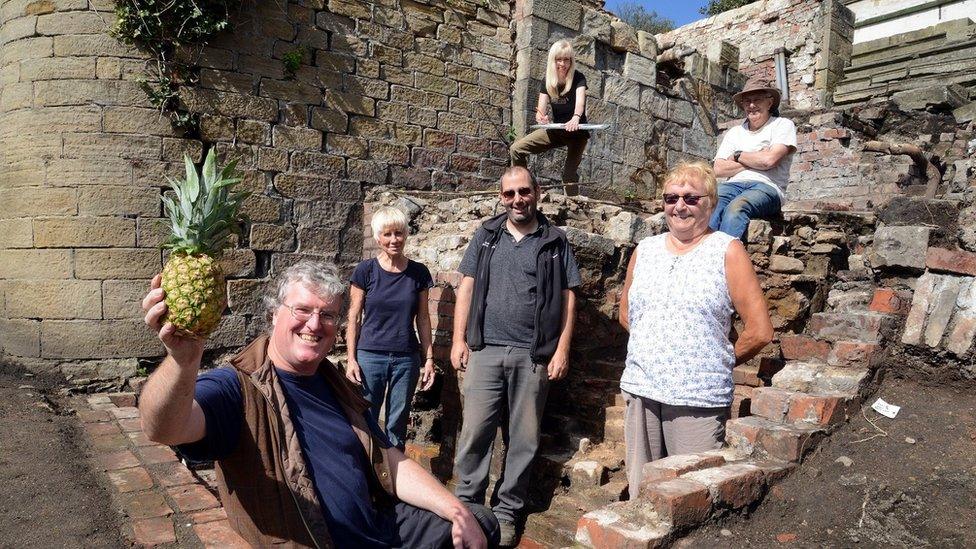Auckland Castle dig uncovers 'pinery-vinery'
- Published

Durham University archaeologists were joined by volunteers from the Auckland Castle Trust
Heating systems to grow fruit have been uncovered at the former private palace of the Prince Bishops of Durham.
The dig at Auckland Castle's walled garden revealed a pioneering pinery-vinery, created by Bishop Richard Trevor in the 1750s.
This utilised furnaces and flues to allow the cultivation of exotic fruits, particularly much coveted pineapples.
It is believed to be one of the first of its kind in the North East and set the standard for following ones.

The pineapple in history
Indigenous to South America, said to originate from the area between southern Brazil and Paraguay
Brought to northern Europe by the Dutch from their colony in Surinam
First thought to have been grown in Europe in 1658 at Meerburg in the Netherlands
So rare and coveted that King Charles II of England was painted receiving the fruit as a gift in 1660s - an act then symbolic of royal privilege
Huge "pineapple stove" built at the Chelsea Physic Garden in 1723
By the 1750s a symbol of wealth and privilege, grown in hothouses called "pineries"

The dig, by archaeologists from Durham University and volunteers from the Auckland Castle Trust, was in advance of a £10m scheme to grow fruit and vegetables under glass domes in the walled garden to supply a new on-site restaurant.
- Published27 May 2015